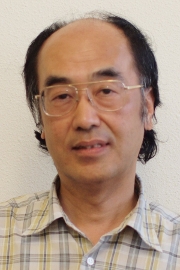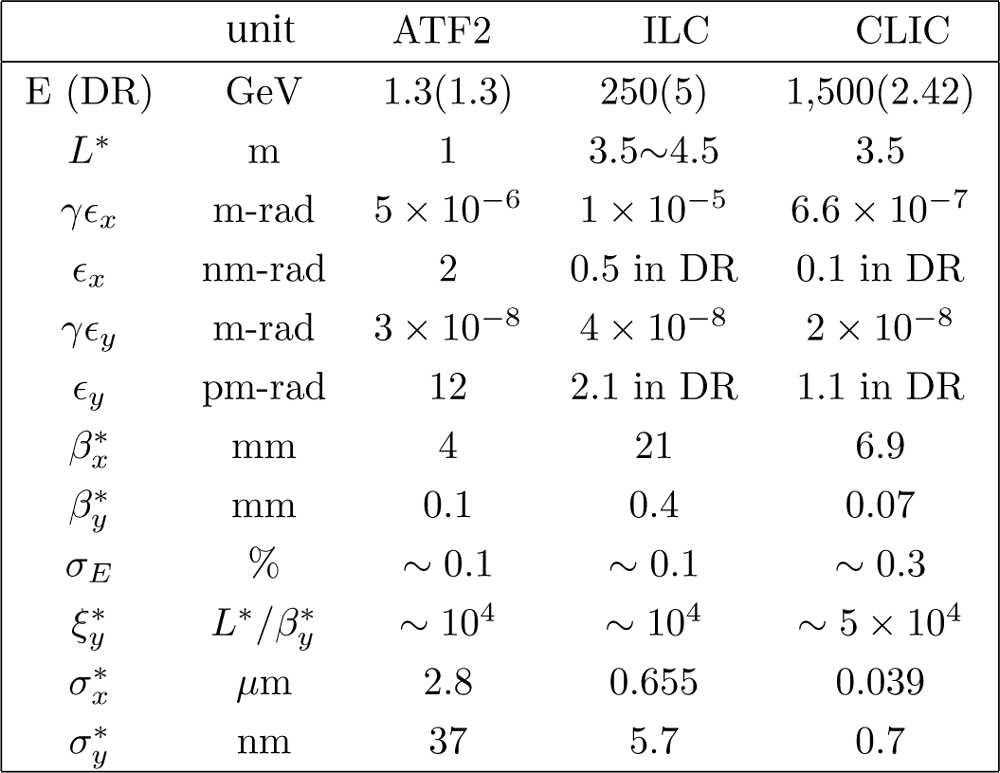Director's Corner
29 April 2010
ATF2 enters the nanometre world
Today's issue features a Director's Corner from Toshiaki Tauchi, a member of the EC.
The ATF2 collaboration has recently succeeded to obtain vertical beam size of less than one micrometre and consequently has now entered into the nanometre world in the final focus system. In this corner, I will describe what is AFT2 and how we reached this challenging beam size.
ATF2 is a final focus test beamline for the ILC in the framework of the international ATF collaboration. The new beamline was built to extend the extraction line at the Accelerator Test Facility (ATF) at KEK, Japan. The beamline consists of extraction, diagnostic, β-matching and final-focus beam lines, where the beam energy is 1.3 GeV. The total length is about 90 metres. The final focus system is scaled to the ILC with essentially the same number of magnets and the same magnitude of chromaticity. The length at ATF2 is 38 metres, at the ILC it will be 700 metres. The final focus optics are the local chromaticity correction scheme, which has never been experimentally verified. The first goal of ATF2 is the verification with achievement of a vertical beam size at the focal point of 37 nanometres. The second goal is to stabilise the beam focal point at the few-nanometre level for a long period in order to assure the high luminosity. In addition, many graduate students are being educated as researchers at ATF2. We expect that some of them will be active in the future linear collider.
To meet the stability requirements, the floor of the extended area was refurbished in summer 2007. The floor became a monolith of a 60-centimetre-thick concrete slab similar to the ATF damping ring floor. Actually, the relative variation of vertical positions between the final focus quadrupole and the interaction point (IP) was measured to be 5.1 nanometres in frequency range from 0.2 to 100 Hertz, which is below the tolerance of 7 nanometres for a 5 percent increase of the beam size. All quadrupole magnets, their support system, and the cavity-type beam position monitors have been constructed by international collaboration. Many components such as the magnet movers and support system of final doublet are provided with in-kind contributions. All the components were installed in the new beamline. In summer 2008, the extraction beamline was re-configured and most of magnets are re-used. At the same time, the whole beam line of ATF2 was completed by end of September 2008 after a construction time of three years.
We started test operation of the new ATF2 beamline primarily for radiation inspection in December 2008. Passing the inspection, we started the commissioning in January 2009. One year on, hardware such as the cavity-type beam position monitors (QBPMs), wire scanners, IP beam size monitor based on laser interferometer, the so-called Shintake monitor etc. have all been checked out at the beamline. In parallel beam tuning software was developed for beam-based alignment (BBA) employing the magnet movers, dispersion, coupling corrections and orbit feedback. The position resolution of QBPMs is designed to be 100 nanometres, just like the ILC specification. About 30-nanometre resolution is the best result achieved to date at some of them. The measured vertical and horizontal emittances are close to the design values of 12 picometres and 2 nanometres respectively at the extraction line.
The IP vertical beam size was first measured to be 3.3 micrometres in November 2009 by the Shintake monitor. Shortly after that, the seed laser of Shintake monitor broke. However, we could continue the beam tuning with a 5-micrometre diameter carbon wire scanner 40 centimetres downstream of the IP. In 2010, replacing the seed laser, the Shintake monitor was fully commissioned for a normal tool of beam size measurement at IP with fine adjustment of polarisation, laser axis alignment. We chose the beam optics with β*x/β*y=40mm/1mm which are 10 times larger than the nominal one to control background at Shintake monitor for the moment.
Besides the linear optics tuning, we developed orthogonal optical adjustment tuning tools, so-called multi-knobs, consisting of five sextupole magnets in the final focus system for fine corrections of the beam waist with the horizontal movements and dispersion, couplings with the vertical ones, respectively, at IP. We tested the multi-knobs for the first time to minimise beam sizes at Shintake monitor in this April run. Consequently, we achieved a vertical beam size of less than 1 micrometre, i.e. σ*y=920 ± 55 nm (preliminary). So, we have now entered into the nanometer world in the final focus system.
In this May, we will have a continuous run for a week, 17 – 21 May, in order to achieve smaller beam size with the present optics. Since the week is dedicated to the ATF2 beam tuning study, many colleagues will participate in this study around the world. We have the goal is to demonstrate the nominal optics for 37nm by the end of 2010.
Finally, we have been learning how important coordination and integration of the efforts of the international collaboration are to achieve the goals. This experience would be valuable for future success of the ILC.
-- Toshiaki Tauchi


